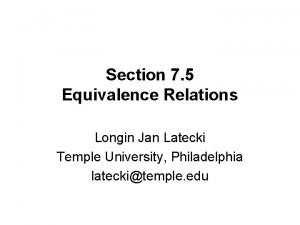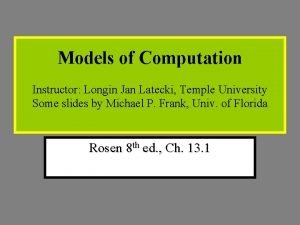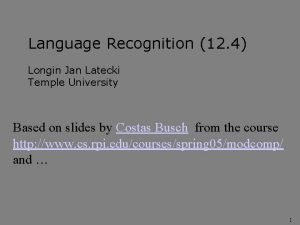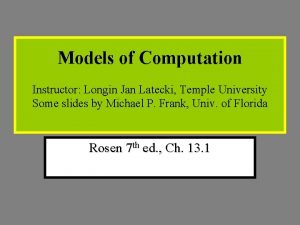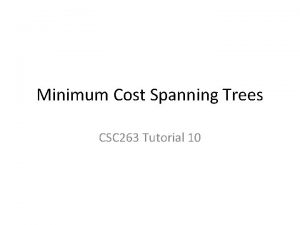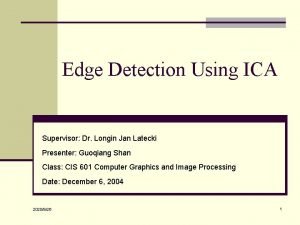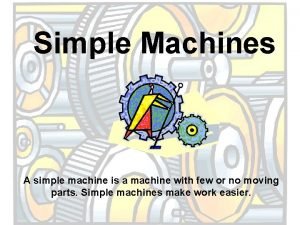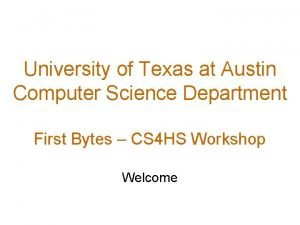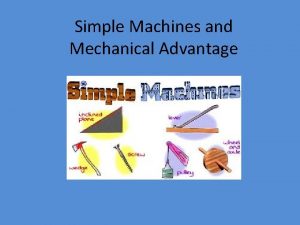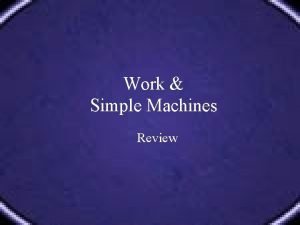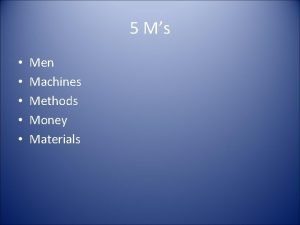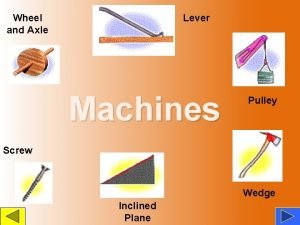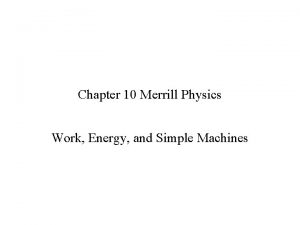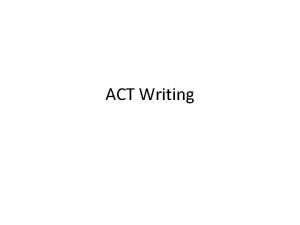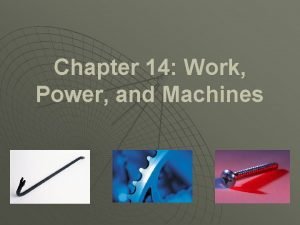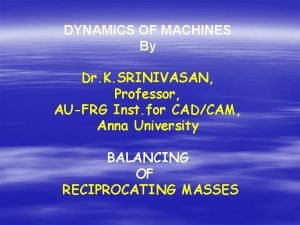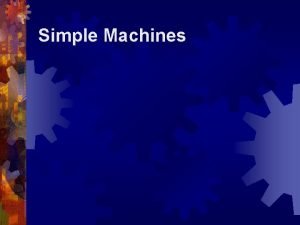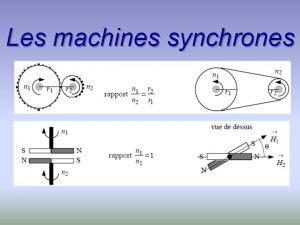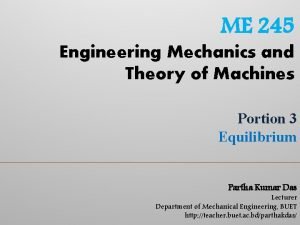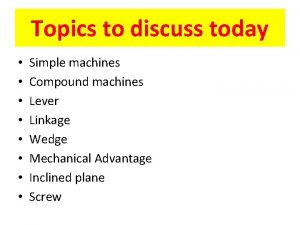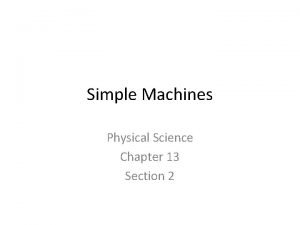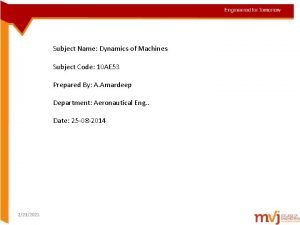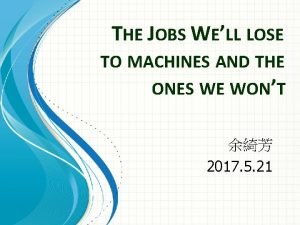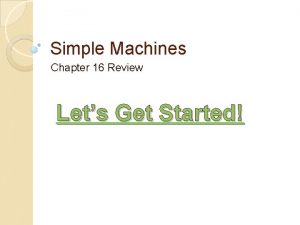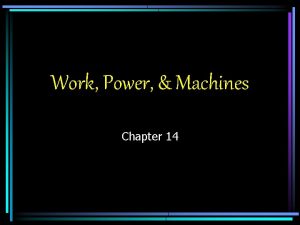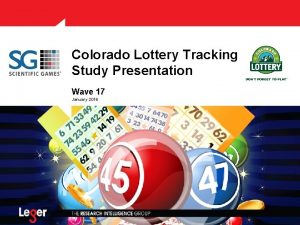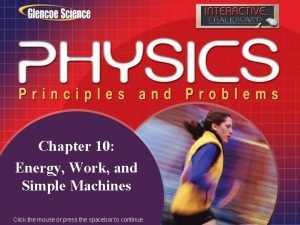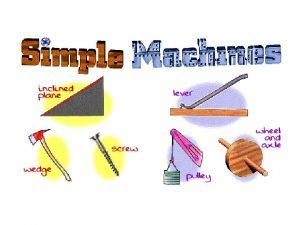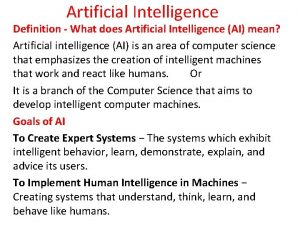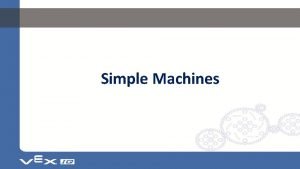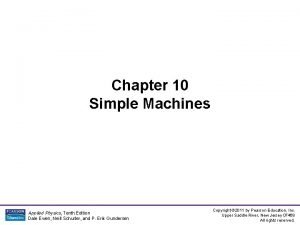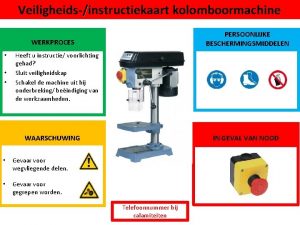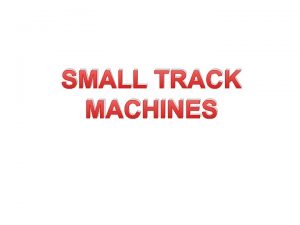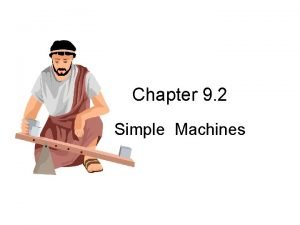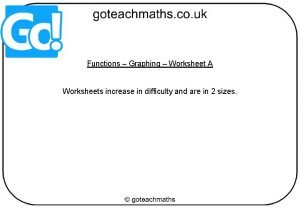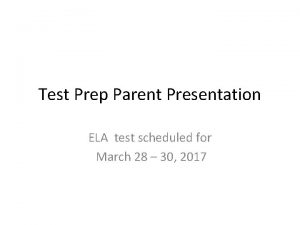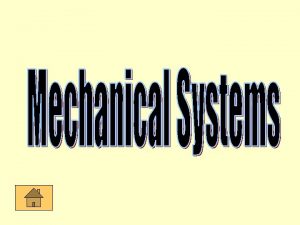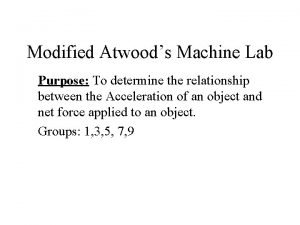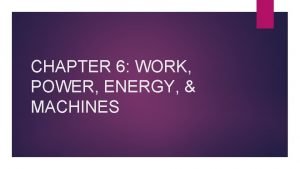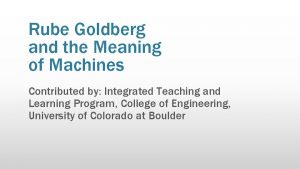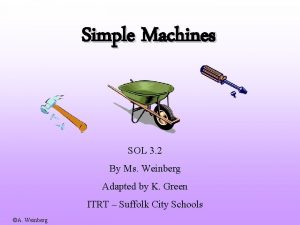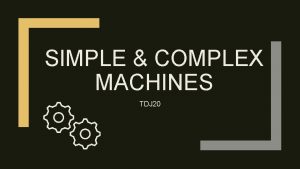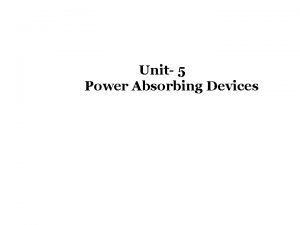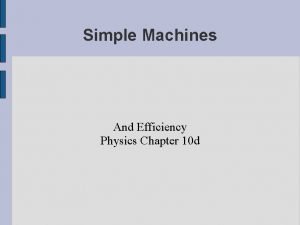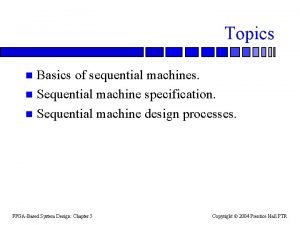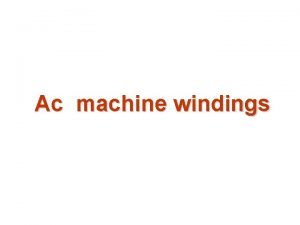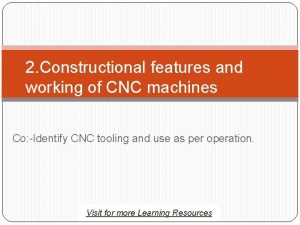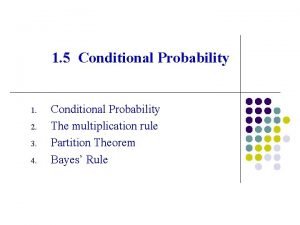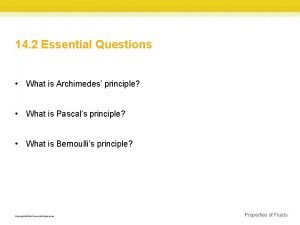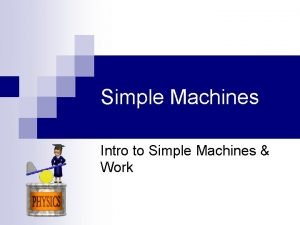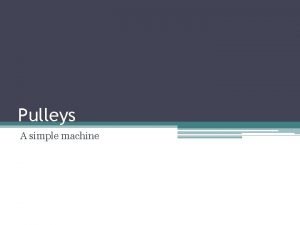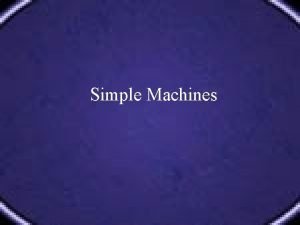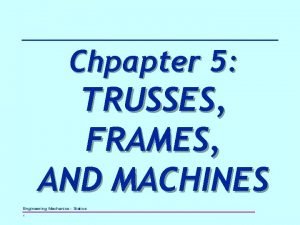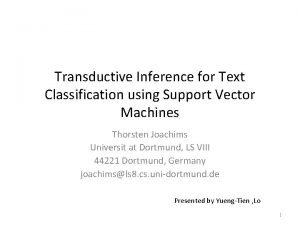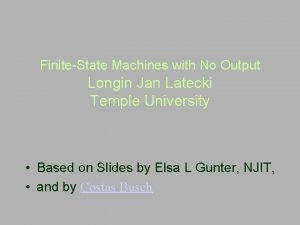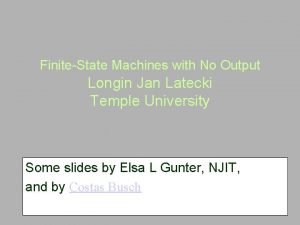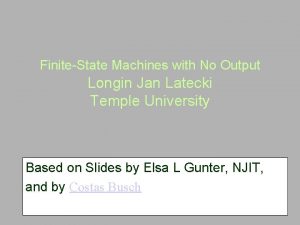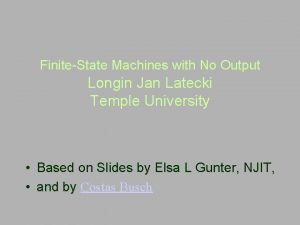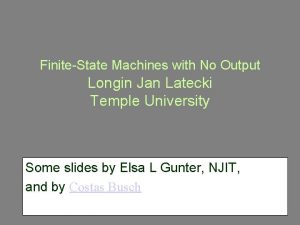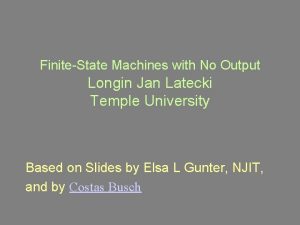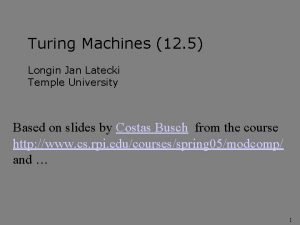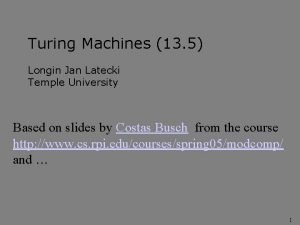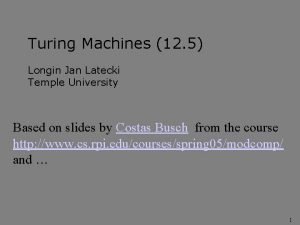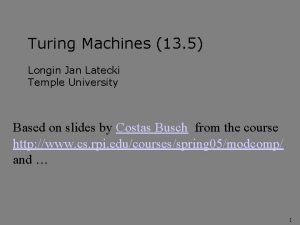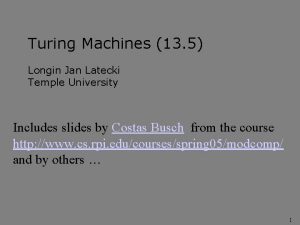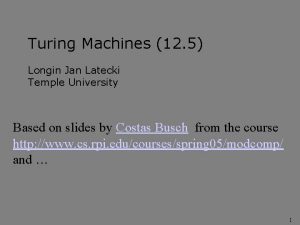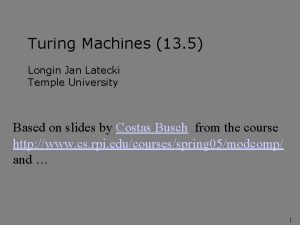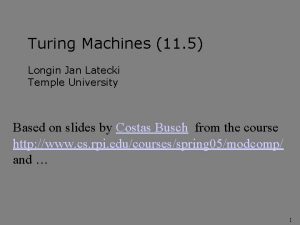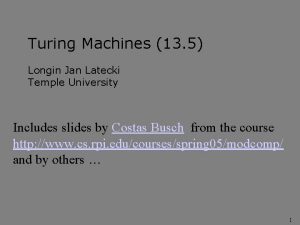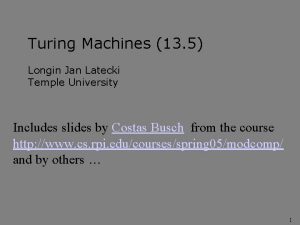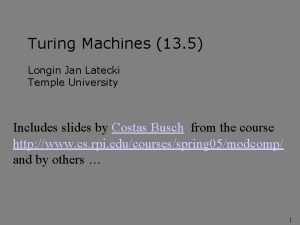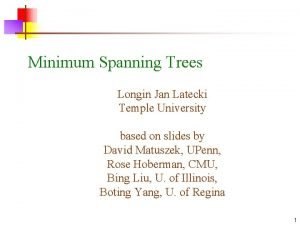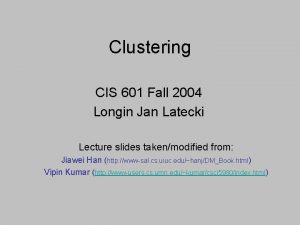FiniteState Machines with No Output Longin Jan Latecki
























































































- Slides: 88

Finite-State Machines with No Output Longin Jan Latecki Temple University Based on Slides by Elsa L Gunter, NJIT, and by Costas Busch

Big Picture: Three Equivalent Representations Regular expressions Finite automata Each can describe the others Regular languages Kleene’s Theorem: For every regular expression, there is a deterministic finite-state automaton that defines the same language, and vice versa. More in Ch. 13. 4 2

Kleene closure • A and B are subsets of V*, where V is a vocabulary The concatenation of A and B is AB={xy: x string in A and y string in B} • Example: A={0, 11} and B={1, 10, 110} AB={01, 010, 0110, 1110, 11110} • What is BA? • A 0={λ} An+1=An. A for n=0, 1, 2, …

Let A be any subset of V*. Kleene closure of A, denoted by A*, is Examples: If C={11}, then C*={12 n: n=0, 1, 2, …} If B={0, 1}, then B*=V*.

Example • Regular expression

Example • Regular expression = { all strings with at least two consecutive 0 }

Implementing Regular Expressions • Regular expressions, regular grammars reasonable way to generates strings in language • Not so good for recognizing when a string is in language • Regular expressions: which option to choose, how many repetitions to make • Answer: finite state automata

Finite (State) Automata • A FA is similar to a compiler in that: – A compiler recognizes legal programs in some (source) language. – A finite-state machine recognizes legal strings in some language. • Example: Pascal Identifiers – sequences of one or more letters or digits, starting with a letter: letter | digit letter S A

Finite Automaton • Input String Output Finite Automaton “Accept” or “Reject”

Finite State Automata • A finite state automation over an alphabet is illustrated by a state diagram: – a directed graph – edges are labeled with elements of alphabet, – some nodes (or states), marked as final – one node marked as start state

Transition Graph initial state transition accepting state

Initial Configuration Input String •

Reading the Input •




Input finished accept

Rejection •




Input finished reject

Another Rejection •

• reject

Another Example




Input finished accept

Rejection Example




Input finished reject

Finite State Automata • A finite state automation M=(S, Σ, δ, s 0, F) consists of • a finite set S of states, • a finite input alphabet Σ, • a state transition function δ: S x Σ S, • an initial state s 0, • F subset of S that represent the final states.

Finite Automata • Transition s 1 a s 2 • Is read ‘In state s 1 on input “a” go to state s 2’ • If end of input – If in accepting state => accept – Otherwise => reject • If no transition possible (got stuck) => reject • FSA = Finite State Automata

Input Alphabet •

Set of States •

Initial State •

Set of Accepting States •

Transition Function •




Transition Function •

Exercise Construct the state diagram for M=(S, Σ, δ, s 0, F), where S={s 0, s 1, s 2, s 3}, Σ={0, 1}, F={s 0, s 3} and the transition function δ : state s 0 s 1 s 2 s 3 Input: 0 s 0 s 2 Input: 1 s 2 s 0 s 1

Language accepted by FSA • The language accepted by a FSA is the set of strings accepted by the FSA. • in the language of the FSM shown below: x, tmp 2, Xy. Zzy, position 27. • not in the language of the FSM shown below: • 123, a? , 13 apples. letter | digit letter S A

Example: • FSA that accepts three letter English words that begin with p and end with d or t. • Here we use the convenient notation of making the state name match the input that has to be on the edge leading to that state. a t p i o d u 48

Example • accept

Example • accept

• Example accept trap state

Extended Transition Function •




Observation: if there is a path from with label then to

Example: There is a walk from with label to

Recursive Definition


Language Accepted by FAs • For a FA • Language accepted by • :

Observation • Language rejected by :

Example • = { all strings with prefix } accept

Example • = { all strings without substring }

Example •

Deterministic FSA’s • If FSA has for every state exactly one edge for each letter in alphabet then FSA is deterministic • In general FSA in non-deterministic. • Deterministic FSA is a special kind of non-deterministic FSA

Example FSA • Regular expression: (0 1)* 1 • Deterministic FSA 1 0

Example DFSA • Regular expression: (0 1)* 1 • Accepts string 0 1 1 0 1 0

Example DFSA • Regular expression: (0 1)* 1 • Accepts string 0 1 1 0 1 0

Example DFSA • Regular expression: (0 1)* 1 • Accepts string 0 1 1 0 1 0

Example DFSA • Regular expression: (0 1)* 1 • Accepts string 0 1 1 0 1 0

Example DFSA • Regular expression: (0 1)* 1 • Accepts string 0 1 1 0 1 0

Example DFSA • Regular expression: (0 1)* 1 • Accepts string 0 1 1 0 1 0

Example DFSA • Regular expression: (0 1)* 1 • Accepts string 0 1 1 0 1 0

Example NFSA • Regular expression: (0 1)* 1 • Non-deterministic FSA 0 1 1

Example NFSA • Regular expression: (0 + 1)* 1 • Accepts string 0 1 1

Example NFSA • Regular expression: (0 + 1)* 1 • Accepts string 0 1 1

Example NFSA • Regular expression: (0 + 1)* 1 • Accepts string 0 1 1

Example NFSA • Regular expression: (0 + 1)* 1 • Accepts string 0 1 1 0 1 • Guess 0 1 1

Example NFSA • Regular expression: (0 + 1)* 1 • Accepts string 0 1 1 0 1 • Backtrack 0 1 1

Example NFSA • Regular expression: (0 + 1)* 1 • Accepts string 0 1 1 0 1 • Guess again 0 1 1

Example NFSA • Regular expression: (0 + 1)* 1 • Accepts string 0 1 1 0 1 • Guess 0 1 1

Example NFSA • Regular expression: (0 + 1)* 1 • Accepts string 0 1 1 0 1 • Backtrack 0 1 1

Example NFSA • Regular expression: (0 + 1)* 1 • Accepts string 0 1 1 0 1 • Guess again 0 1 1

Example NFSA • Regular expression: (0 + 1)* 1 • Accepts string 0 1 1

Example NFSA • Regular expression: (0 + 1)* 1 • Accepts string 0 1 1 0 1 • Guess (Hurray!!) 0 1 1

If a language L is recognized by a nondeterministic FSA, then L is recognized by a deterministic FSA Example 10, p. 812 NFSA

How to Implement an FSA A table-driven approach: • table: – one row for each state in the machine, and – one column for each possible character. • Table[j][k] – which state to go to from state j on character k, – an empty entry corresponds to the machine getting stuck.

The table-driven program for a Deterministic FSA state = S // S is the start state repeat { k = next character from the input if (k == EOF) // the end of input if state is a final state then accept else reject state = T[state, k] if state = empty then reject // got stuck }
 Longin jan latecki
Longin jan latecki Longin jan latecki
Longin jan latecki Longin jan latecki
Longin jan latecki Longin jan latecki
Longin jan latecki Longin jan latecki
Longin jan latecki Longin jan latecki
Longin jan latecki Longin jan latecki
Longin jan latecki Csc longin
Csc longin Sliding window filter
Sliding window filter Dr longin
Dr longin A splice in a welding cable should never be any closer than
A splice in a welding cable should never be any closer than Work and energy section 2 describing energy answer key
Work and energy section 2 describing energy answer key Sample of simple machine
Sample of simple machine Vijaya ramachandran ut austin
Vijaya ramachandran ut austin Victorian bathing machines
Victorian bathing machines Benefits of simple machines
Benefits of simple machines Isokinetic machines
Isokinetic machines Define simple machines
Define simple machines Men money material and machines are included in
Men money material and machines are included in Pulley ama formula
Pulley ama formula Chapter 10 energy work and simple machines answer key
Chapter 10 energy work and simple machines answer key Mechanization in a sentence
Mechanization in a sentence Bottle cap simple machine
Bottle cap simple machine Rotary tables for milling machines
Rotary tables for milling machines Chapter 14 work power and machines
Chapter 14 work power and machines Dynamics of machines
Dynamics of machines Bicycle
Bicycle Courbes de mordey
Courbes de mordey Examples of cinquains
Examples of cinquains Fiiro machines
Fiiro machines Application of synchronous motor
Application of synchronous motor Meyb-245
Meyb-245 Plus grosse pelleteuse
Plus grosse pelleteuse Wheelbarrow compound machine
Wheelbarrow compound machine Simple machines kitchen
Simple machines kitchen Compound machine
Compound machine Dynamics of machines
Dynamics of machines Jnj machines pvt ltd
Jnj machines pvt ltd Pulley system
Pulley system 余綺芳
余綺芳 Georgia lottery vending machines
Georgia lottery vending machines Names of simple machines
Names of simple machines State machines digital electronics
State machines digital electronics Examples of wheel and axels
Examples of wheel and axels Chapter 14 work power and machines
Chapter 14 work power and machines Colorado lottery draw games
Colorado lottery draw games Energy work and simple machines chapter 10 answers
Energy work and simple machines chapter 10 answers What is it called
What is it called Simples machines examples
Simples machines examples Types of artificial intelligencel
Types of artificial intelligencel Simple machines tools
Simple machines tools Machines in physics
Machines in physics Veiligheidsinstructiekaart draaibank
Veiligheidsinstructiekaart draaibank Small track machine manual
Small track machine manual A simple machine can multiply
A simple machine can multiply Function machines worksheets
Function machines worksheets Building the longest tallest fastest scream machines
Building the longest tallest fastest scream machines Mechanical advantage symbol
Mechanical advantage symbol 2.j modified atwood machines
2.j modified atwood machines Work power energy and machines
Work power energy and machines Self operating napkin simple machines
Self operating napkin simple machines Kinds of simple machine
Kinds of simple machine Examples of wedges
Examples of wedges Political machines/bosses
Political machines/bosses Examples of complex machines used in everyday life
Examples of complex machines used in everyday life Air compressor
Air compressor Members of the progressive movement generally supported
Members of the progressive movement generally supported Define efficiency of a simple machine
Define efficiency of a simple machine Sequential machines
Sequential machines Phase spread in ac machine
Phase spread in ac machine Define simple machines
Define simple machines Constructional features of cnc machines
Constructional features of cnc machines How to create a poster slogan
How to create a poster slogan Formula of conditional probability
Formula of conditional probability Archimedes principle
Archimedes principle What are the six types of simple machines
What are the six types of simple machines What uses a pulley
What uses a pulley Differentiate between simple machine and compound machine
Differentiate between simple machine and compound machine What type of simple machine is a lawn mower
What type of simple machine is a lawn mower Cribmaster vending
Cribmaster vending Truss in engineering mechanics
Truss in engineering mechanics Tsvms
Tsvms Pentest virtual machine
Pentest virtual machine Which of the following is a metal cutting operation
Which of the following is a metal cutting operation Section 4 review physical science
Section 4 review physical science Vending machine
Vending machine Gears and pulley
Gears and pulley Neural networks and learning machines
Neural networks and learning machines The infernal desire machines of doctor hoffman
The infernal desire machines of doctor hoffman
